That was awesome. By the end of my time in BCM 325 I’ve grown to love it even more than I already did at the start. Now it’s time to reflect on my live analysis work throughout the second half of the semester, looking at The Matrix (1999), Ready Player One (2018) and Arrival (2016). Drawing back on my previous analyses, my goal was to have viewed the texts pre-emptively to garner sources earlier, and to be a bit more careful with the language I was using. Did I do such things? Well let’s find out!
SPOILERS ALERT!
The Matrix (1999)
I honestly wouldn’t know what I would be doing without Chris in this subject, see our conversation from the get-go of the film about decision making.

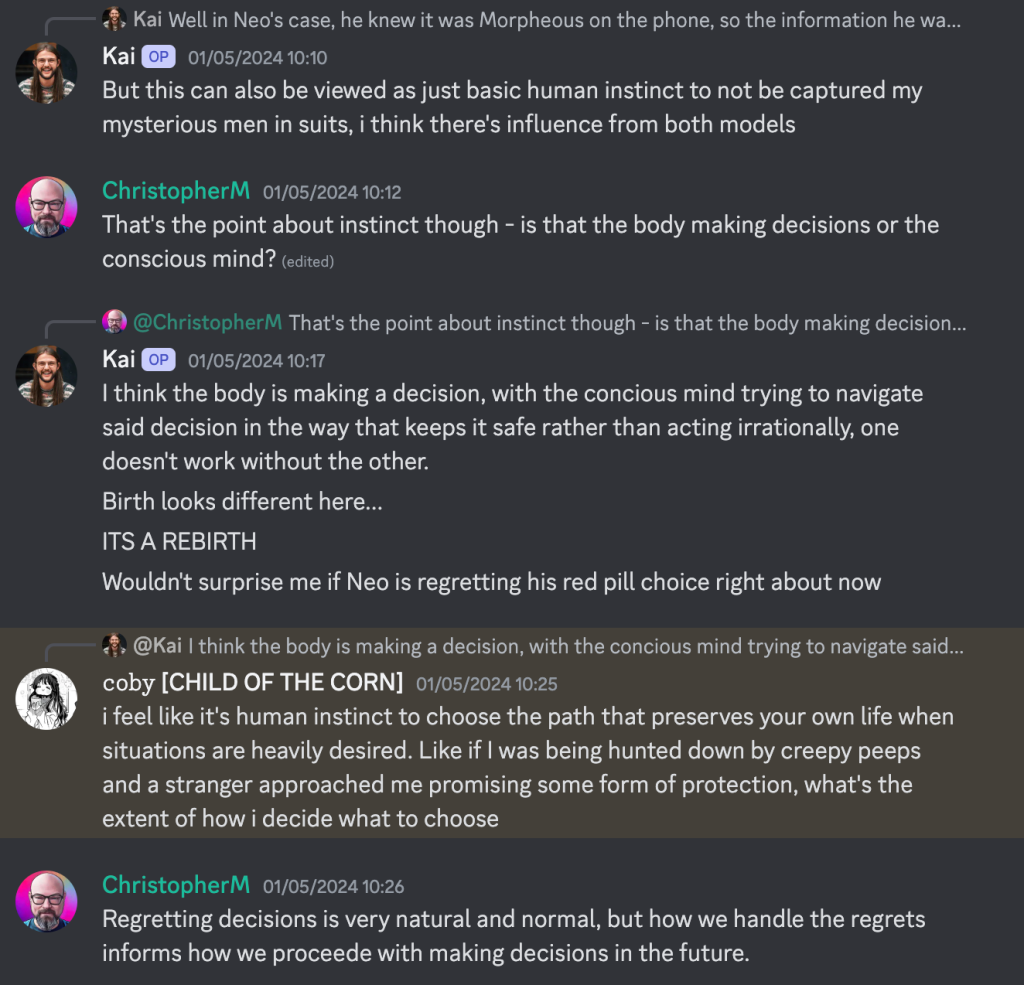
The overarching theme of the consequences of decisions is a core pillar of this film, and it isn’t hidden. When it comes to decision making and the two approaches of theory behind it (Stollberg-Rilinger 2019), we see both options being pursued throughout the course of the film. Referring to the conversation with Chris, I think decision making is more based in the notion that decisions are social and communicative acts that involve externally observable actions, and even if they are internal, still hold historical value. Although Chris’ point remains true that life-threating decisions can be based in human instinct, there is still a conscious navigational element required to keep the mind from going into deep sense of panic, leading to uncalculated decision making.
Ready Player One (2018)
Out of all the films we have analysed throughout this subject, this was the only film I had seen before, and watched again in the lead-up to the live screening. In my mind, that’s a success, but I wish I did it more because I think this analysis was my best one.



Here is where the difference between ‘real’ and ‘actual’ (Deleuze 2002) made a lot more sense to me, allowing me to deepen my analysis even more. The blending of reality and actuality is what created the cultural shift towards the OASIS, providing actual experiences is what helped the OASIS build a foundation of substantial and real experience.
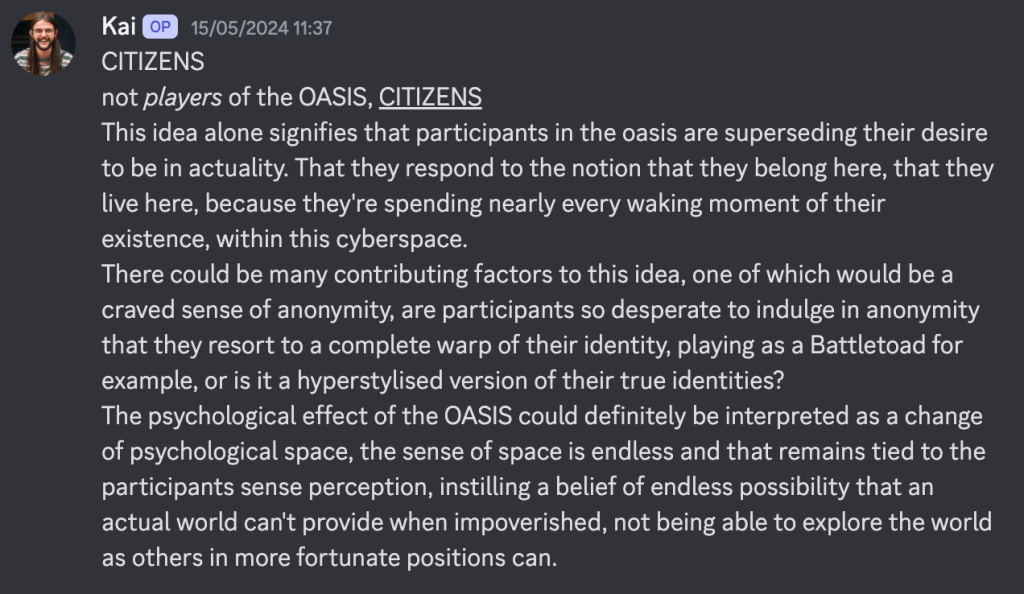
This one was heavy for me to write out, I even surprised myself. The notion of a cyberspace superseding actuality is one that we as observers may perceive as delirious, but if anything, we’re already there, just in a different balance of virtuality and actuality compared to the OASIS. The engagement of boundless interaction governed by a net state is perceived as a social freedom (Harvey & Moore 2023), combined with immersion in virtuality where imagination knows limited bounds, creates an intoxicating experience that emphasises anonymity over creating an online persona bounded by personal traits.
Arrival (2016)

The decision processing in this film is wildly understated. The decisions Louise had made leading her to the point of discovering the Heptapods existing in non-linear time, were influenced by Louise’s memories of non-linear time, of which she didn’t realise until she recognises that discovering their language granted that connection. Gosh that was difficult to explain. The illusion created by the plot that all of the decisions that were made were based on past experiences, to reveal that it was based on future experiences, raises the question are our decisions based in our past experience, our goals for the future, or a mix of both?
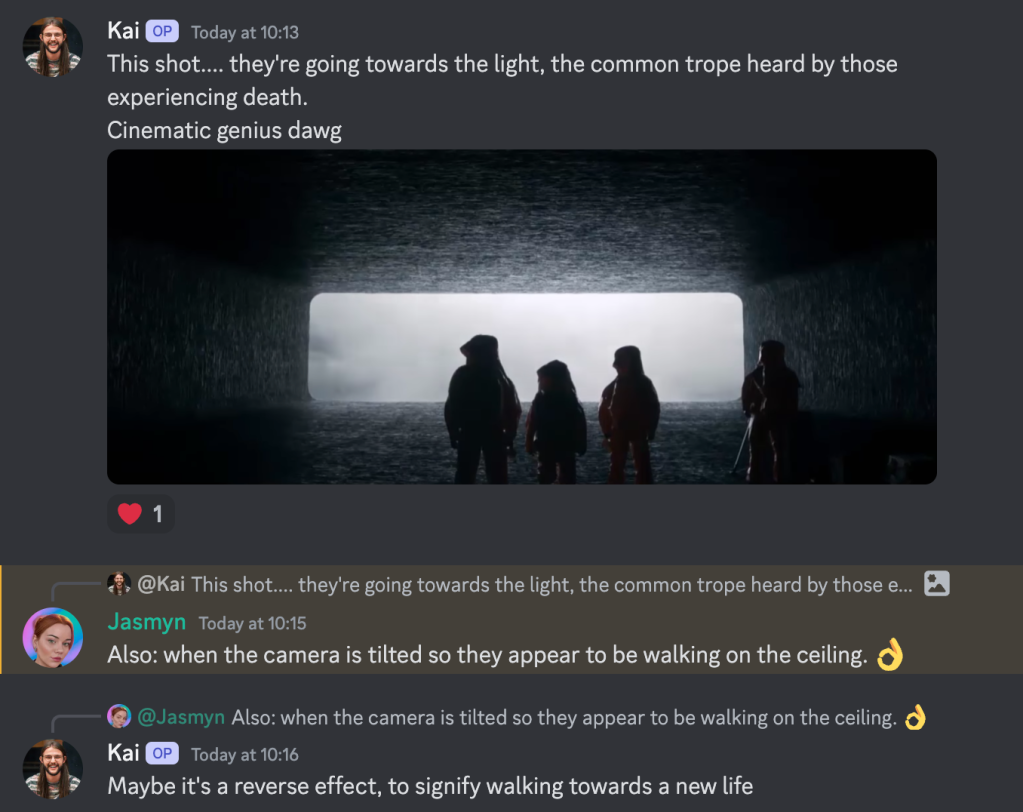

Final Thoughts
As for what I wish I should’ve done, again, watching the films prior to the live screening like I did for Ready Player One would’ve been incredibly helpful, but navigating ADHD in university at the early stages is still proving to have its challenges. I do believe however that I improved on using more formal language when sharing my thoughts and analysis. Overall, these screenings have taught me a few things, arrive more than prepared, bouncing ideas off others proves useful, and as said by Chris “time you enjoy or have fun wasting, is never wasted.”.

Discord Conversations (more in thread links)
Discord Thread Links
The Matrix: https://discord.com/channels/1179652660769607730/1235014396196159598
Ready Player One: https://discord.com/channels/1179652660769607730/1240093208772345936
Arrival: https://discord.com/channels/1179652660769607730/1242621100911759400
Cover image created by Midjourney using prompt: an alien in the matrix wearing a comically large VR headset, 1950s comic book style –ar 16:9
References:
Stollberg-Rilinger, B. 2019, ‘Decision’, in H. Paul (ed.), Critical Terms in Future Studies, Springer Nature, Switzerland.
Deleuze, G. 2002. The actual and the virtual. In Dialogues II, trans. Eliot Ross Albert, 112–16. New York: Columbia University Press.
Harvey, CJ. & Moore, CL. 2023, ‘The client net state: Trajectories of state control over cyberspace’, Policy and internet, vol. 15, no. 1, pp. 133–151.

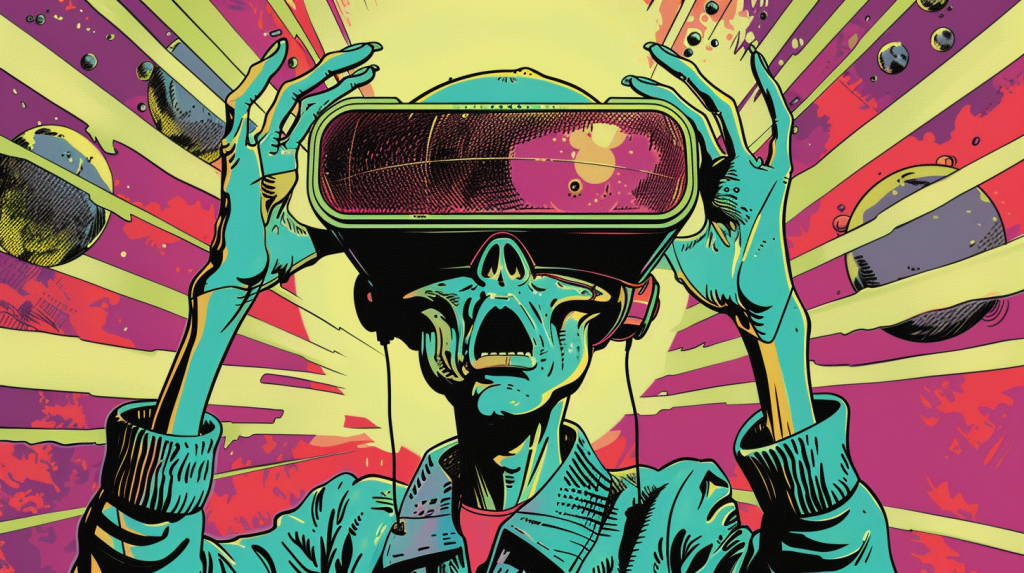
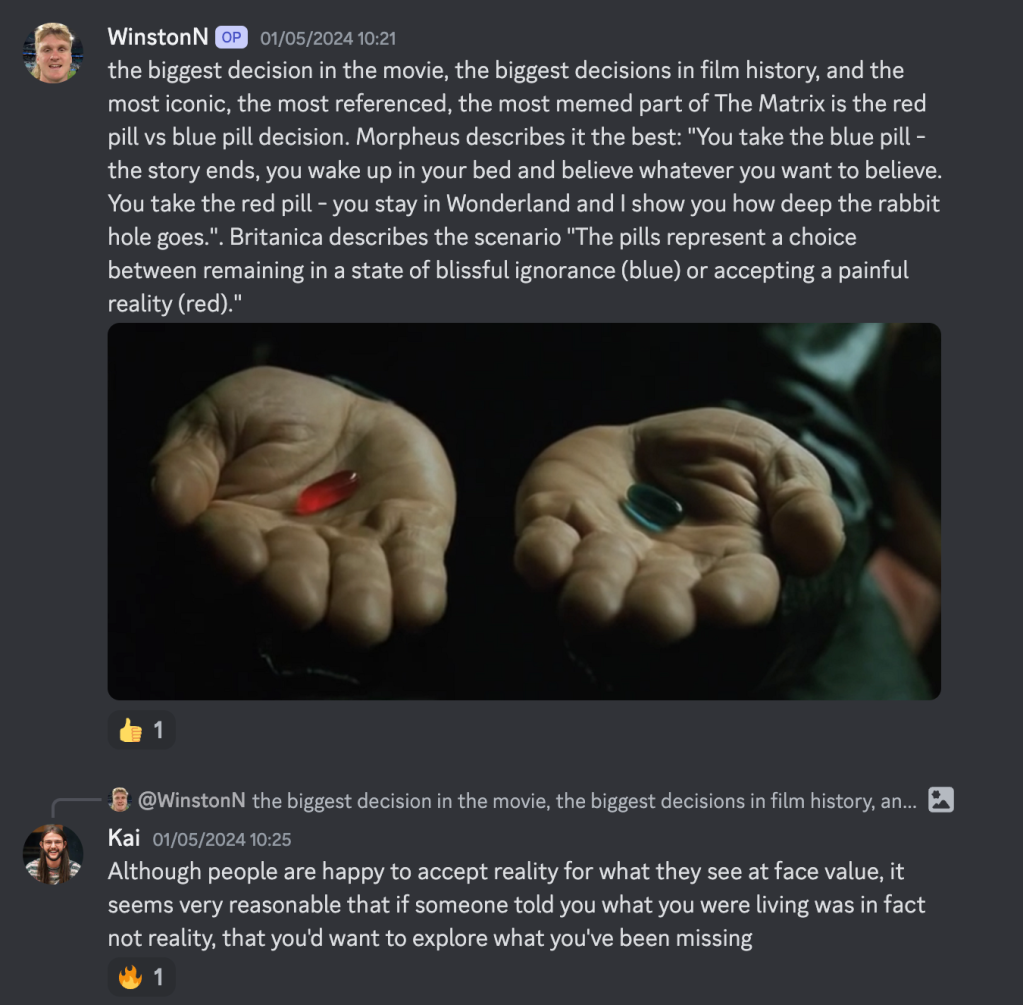

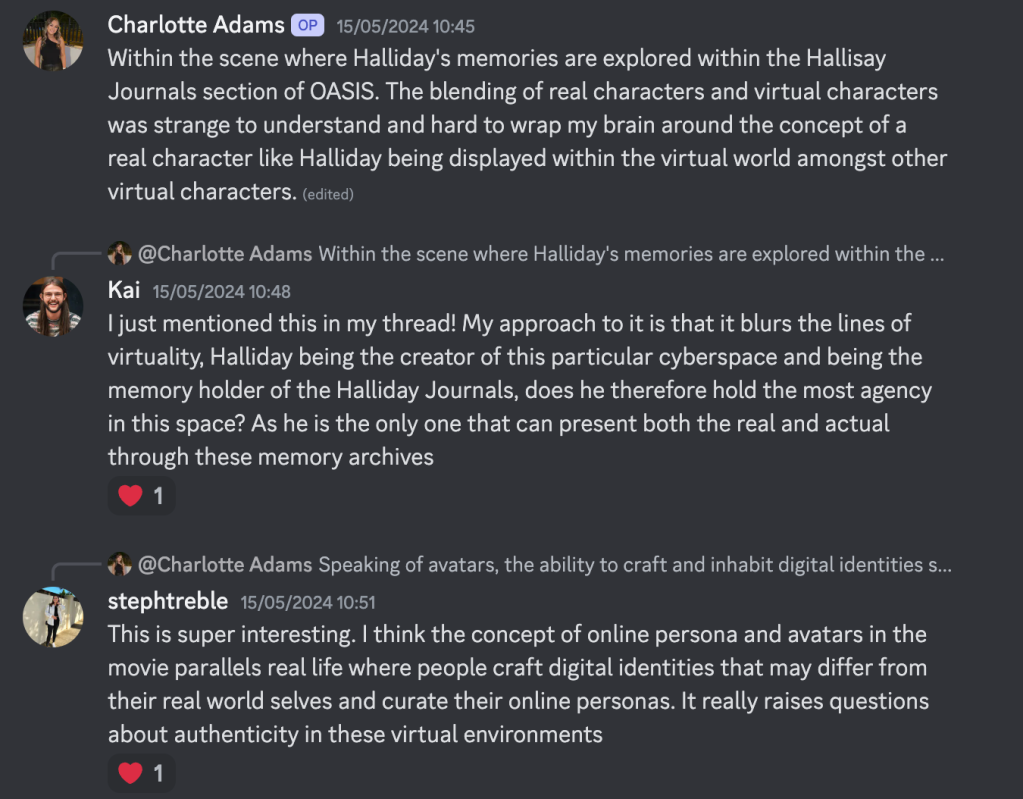
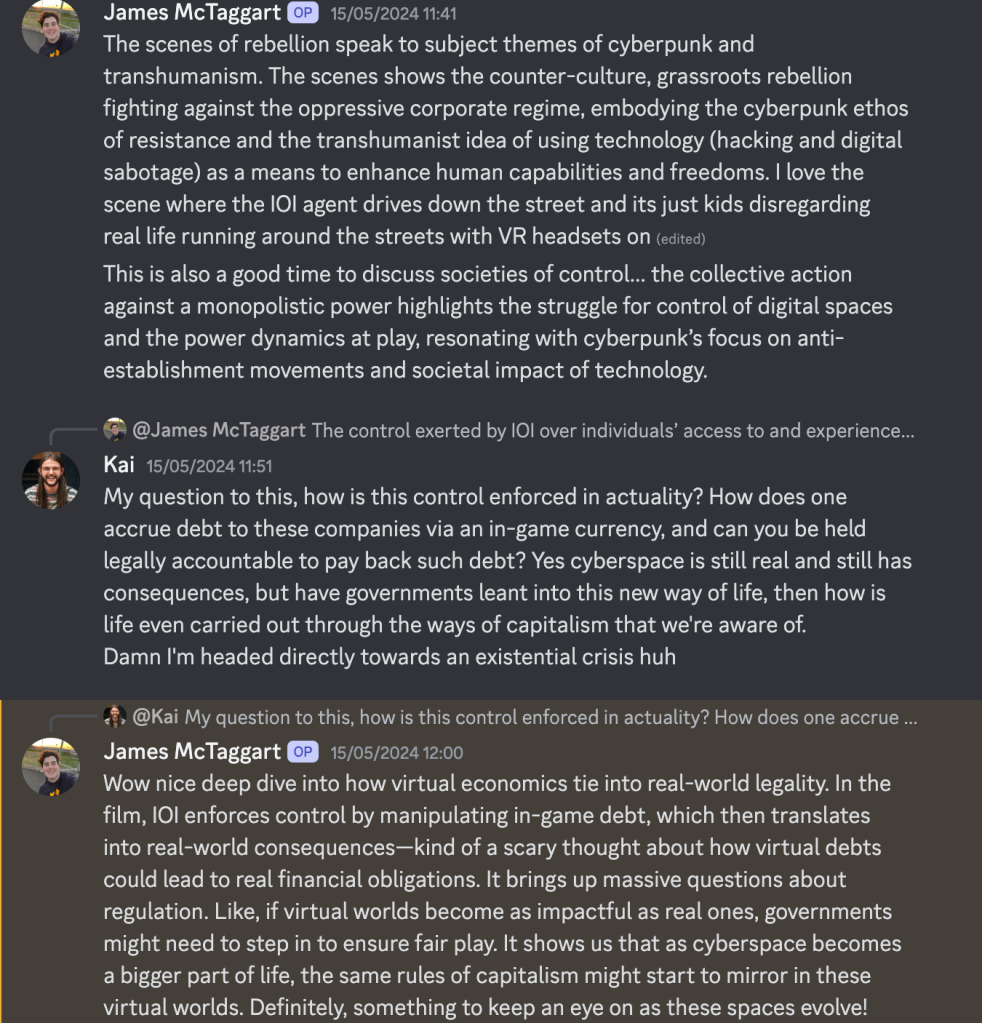

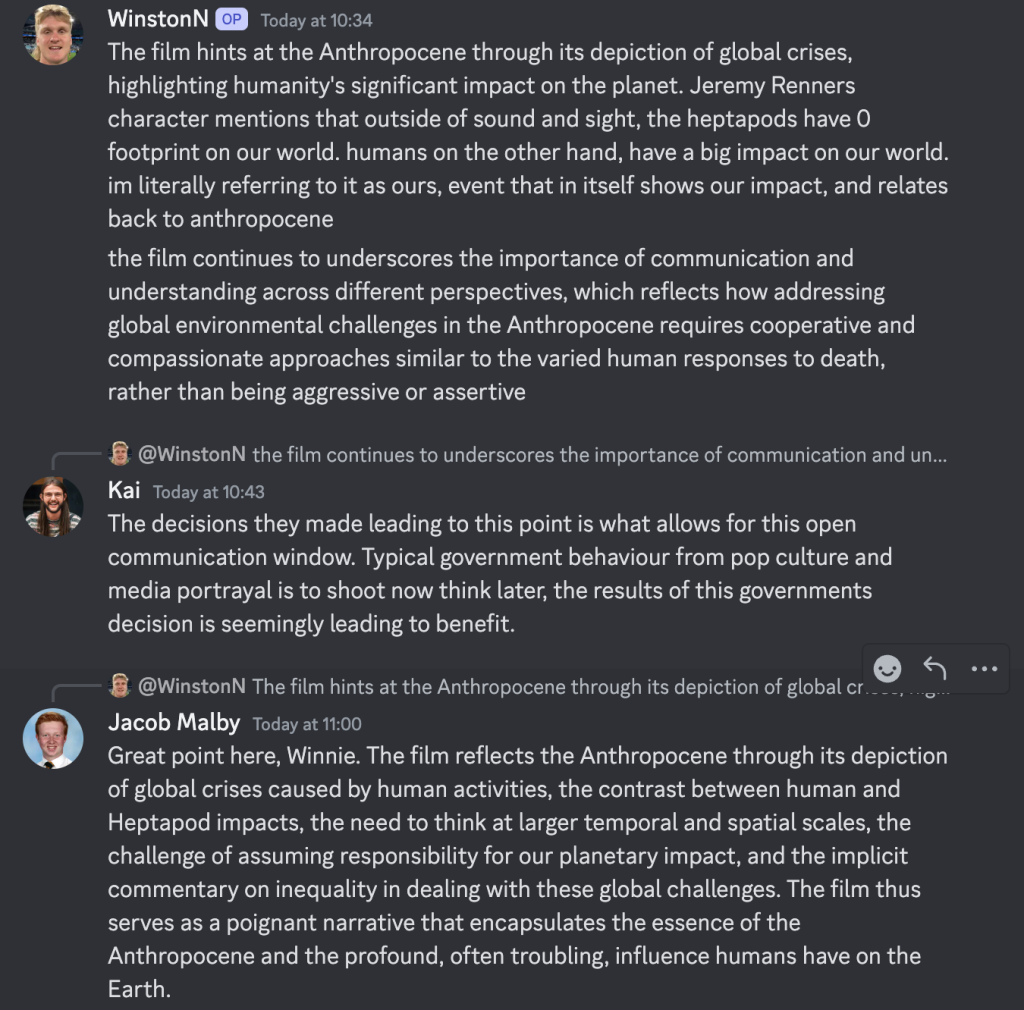
Leave a comment